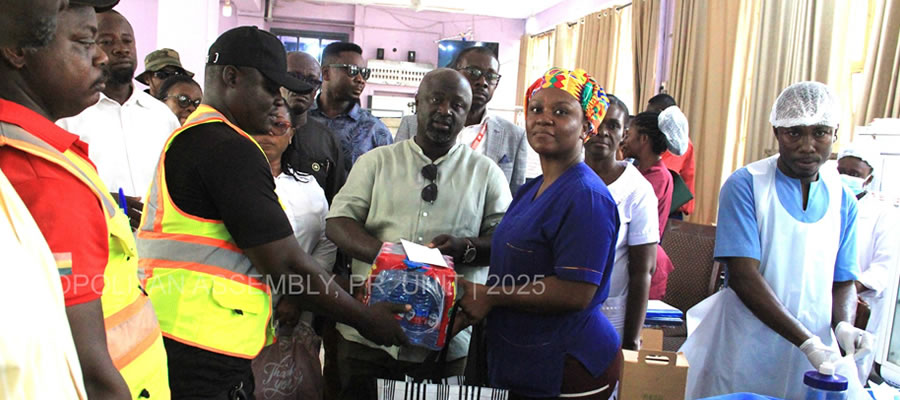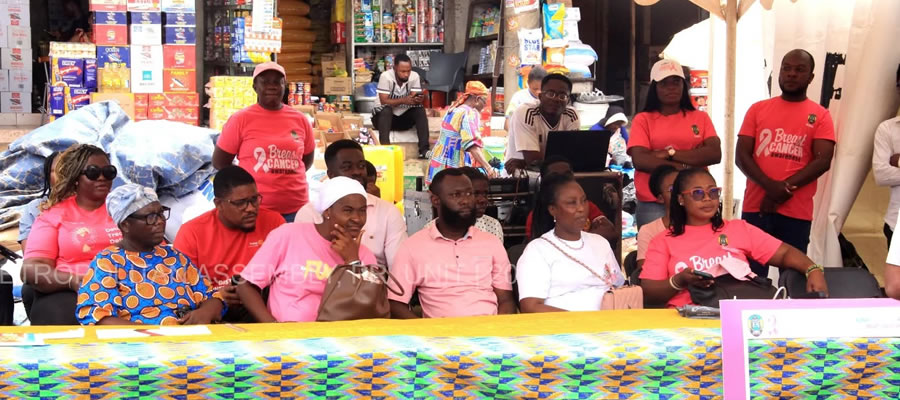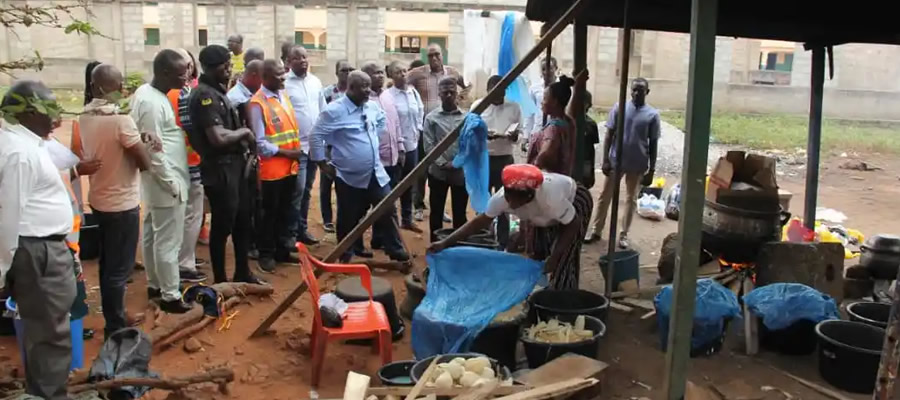

Water is very essential for the survival of humanity; the provision of treated water to the inhabitants of the city is a civic responsibility of the city administration. The presence of good treated water is essential for good health and the elimination of some water borne diseases.
Water Supply Network and Status
The supply of water to the Kumasi Metropolis is from two surface water treatment plants; Owabi and Barekese headworks located 10km and 16km respectively from Kumasi. The supplies of water from these headworks serve Kumasi metropolis as well as surrounding communities outside the metropolis. The Owabi headwork is operating at full capacity whereas the Barekese headworks have a potential for further expansion to increase production. The treated water is stored in:
A circular ground level storage reinforced concrete reservoir of capacity 4500m3 located at Suame
A rectangular ground level storage reinforced concrete reservoirs of capacity 9000m3 located at Suame
A reinforced concrete water tower with a capacity of 300m3 located at Suame
500,000 gallon capacity reservoir located at KNUST.
Sanitation
Most residents in the Metropolis (about 38%) still use public toilets for which they pay between ¢200 and ¢500 per visit depending on the type of facility. Another 25% use household water closet facilities. The unhygienic bucket latrine system caters for 12 per cent of the population, 8% rely on sewerage (Asafo, 4BN, KATH, KNUST, Ahinsan and Chirapatre Housing Estates); whilst 10% use pit latrines (KVIP/Traditional) and 6% ease indiscriminately. The above scenario represents an improvement of the situation following the successful implementation of the IDA/GOG financed Urban Environmental Sanitation Project (UESP) from 1996 – 2002.
Many government offices, schools and private institutions still require improved sanitation facilities. Interventions are yet to be made in the industrial sector. Effluent from the breweries, leachate from sawmills and waste oil spillages from the vehicle service centre at Suame are discharged into receiving waters without treatment.
Storm Drainage
The storm water drainage system is essentially an open sewer, which discharges into the Subin, Aboabo and Sissai rivers and as a result beneficial users of these rivers are adversely affected for a number of miles downstream.
Industrial Wastewater
The principal generators of industrial wastewater are the two (2) breweries, Guinness Ghana and Coca Cola Bottling Company and the Kumasi Abattoir. Together these generate about 1,510m3 of effluent daily all of which end up in the city’s drains without treatment.
Light industrial activities at the Suame Magazine Complex and sawdust from sawmills also generate significant amount of waste oil and leachate respectively which add to environmental degradation.
Solid Waste Management
Waste Generation and Distribution
The current domestic waste generation in Kumasi based on the projected population of 1,610,867 (Statistical Service, 2006) is 1000 tonnes.
Collection Methods, Service Coverage And Transportation
This service is delivered by the private sector under various conditions. Two types of collection are employed for this service delivery. They are;
House-to-House Solid Waste Collection
Aryetey Brother Company Limited (ABC), Waste Group Ghana Limited (WGG), Sak-M Company Limited (SAK-Mo Meskworld Limited (ML) and Kumasi Waste Management Limited (KWML), are the contractors responsible for the delivery of these services. About 33% of the population enjoys this service but payment for the service is irregular. It is on franchise basis for a monthly fee of ¢10,000 to ¢30,000 per house. No cost is attributed KMA under this scheme. However the impact of the services as well as its efficiency is affected by the scattered nature of the service area.
Communal Solid Waste Collection
Kumasi Waste Management Limited (KWML), Waste Group Ghana Limited (WGG), Meskword (ML) and Aryetey Brother Company Limited (ABC) are the contractors involved in delivering this service. The total quantities collected are weighed at the disposal site and payment is based on a rate of ¢90,000 per tonne.
The Communal Collection System entails the location of metal containers (skips) at designated sites known as transfer stations, which are shared by a number of houses within that community. When the skips are full, they are transported and emptied at final disposal site by skip loading trucks. Where there are no containers, households deposit their refuse indiscriminately.
The Central Government through the Ministry of Local Government Rural Development and Environment has been assisting KMA in the payment of the contractors, which stands at about 2 billion per month representing an average of 600 tons of collected waste per day. In the event of the central government withdrawing the assistance, KMA would be faced with the challenge of having to mobilize funds if the arrangement is to be sustained.
Collection from Institutional and industrial Premises
Collection from institutional and industrial premises rely on container services including limited sections of the Kwame Nkrumah University of Science and Technology campus where the Health Services Unit provides collection from bungalows and halls of residence employing a side loading truck. However, the limited collection from a number of private clinics is through the use of side loading trucks in which the clinical waste is co-mingled with householder domestic refuses.
Current Disposal Operations
A well-engineered sanitary site is in use at Dompoase where, refuse is placed compacted and covered at the site. A weighbridge is also available and attached to a control room where the refuse is weighed and inspected before being accepted into the landfill. A maintenance bay and offices are also at the site. Heavy-duty equipment are available for spreading of waste, compaction and covering. Grading and gravelling of access roads are other vital activities at the landfill site.
Laws and regulations
The existing byelaws are outdated particularly in terms of penalties. Its enforcement has also been weak.
Challenges in water supply
Frequent power outages affecting production
Bottlenecks in the distribution network
Low water production capacity
Delays in the payment of bills by Government departments.
Leakages from pipe lines
Current Challenges in waste management
Inadequate funding for capital investment for effective delivery of waste management services.
Inadequate equipment holding culminating in limited coverage of service delivery
Inadequate byelaws and lack of enforcement of available ones.
Inadequate revenue mobilization to finance Waste Management Service costs.
Bad attitude of residents such as indiscriminate disposal of household waste and littering due to lack of effective environmental health education and service promotion strategy.
Poor infrastructural condition particularly road networks and waste collection points, mostly in new settlements, which impacts negatively on service delivery.
Inappropriate design of communal containers. The high reach of containers result in waste being thrown on the ground particularly by children.
Date Created : 11/28/2017 7:24:06 AM












 facebook
facebook
 twitter
twitter
 Youtube
Youtube
 +233 593 831 280
+233 593 831 280 0800 430 430
0800 430 430 GPS: GE-231-4383
GPS: GE-231-4383 info@ghanadistricts.com
info@ghanadistricts.com Box GP1044, Accra, Ghana
Box GP1044, Accra, Ghana